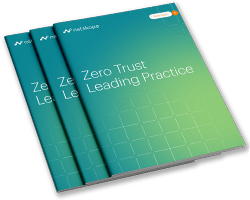Zero Trust Fundamentals and Implementation Best Practices
As digital transformation improves agility and transparency, CISOs and CIOs face greater data vulnerability and security risk. Networked resources are now available to more users from more places. So, access permissions can no longer be permanent or pervasive. Organizations must operate from a position of zero trust. Security teams need finely tuned mechanisms to give authorized users secure access to all the resources they need—and none that they don’t.
It’s easy enough to talk about zero trust, but implementing it in the real world is another matter. That’s why we created this practical white paper. Designed to give IT and security professionals a framework for understanding and implementing zero trust best practices, the paper covers:
- Principles that should guide every zero trust strategy
- How to use context to assess the risk of each type of resource access
- Characteristics of adaptive access controls that support agile business processes
These principles and practices have been field-tested in real-world SASE security architectures. See how they can apply to yours.
